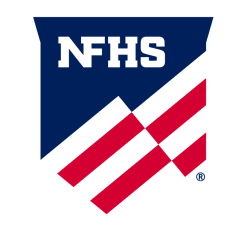INDIANAPOLIS, IN (April 13, 2023) — Swimming stroke changes and a new penalty for close diving board proximity stand out among the high school swimming and diving rules changes approved for the 2023-24 school year.
Risk minimization was a top priority, leading to eight rules changes brought forth by the National Federation of State High School Associations (NFHS) Swimming and Diving Rules Committee, which held its annual meeting March 19-21 at the Conrad Hotel in downtown Indianapolis. The NFHS Board of
Directors approved all eight rule change submissions.
Several technical rules changes were made to breaststroke, backstroke and butterfly. “We removed rules that do not present a competitive advantage, are rarely seen today, and make sense for high school swimmers,” said Sandy Searcy, NFHS director of sports and liaison to the NFHS Swimming and Diving Rules Committee.
Backstroke swimmers are now permitted to submerge at the backstroke flags and be completely underwater at the finish due to changes in Rule 8-2-1g. The change allows the official to concentrate on the finish at the wall and aligns with national trends. The rule applies to all backstroke finishes including the medley relay and the individual medley.
Changes to breaststroke (Rule 8-2-2d-h) and butterfly (Rule 8-2-3c, e, g) provide clarity, consistency and remove elements of the turn and finish which were difficult to officiate. Alterations are not expected to provide a competitive advantage for athletes.
“Factors at the forefront of our discussions were fair play, risk minimization and awareness of national trends,” said Rod Garman, chair of the NFHS Swimming and Diving Rules Committee and assistant executive director of the Kansas State High School Activities Association.
A penalty will now be imposed if the diver’s head is too close to the diving board according to changes in Rule 9-7-4C. A penalty was already in place for when a diver hit the board. Diving referees will determine the new penalty call and should sit in line with the end of the board to see where divers enter the water in relation to the board.
“We wanted to make it clear that safety is paramount and that we have a penalty in place that elevates the divers’ and coaches’ awareness of entering the water from an appropriate distance from the board,” Searcy said. “It is important that the NFHS provide educational resources to illustrate what is too close and specify the referee’s vantage-point.”
Three diving positions were removed with changes to Rule 9-5. The committee determined that performing these dives in the straight position was too dangerous at the high school level due to the close placement of the diver’s head in relation to the board. The difficulty level was such that divers were not typically performing the dives, according to Searcy.
Finally, an editorial change was made to Rules 3-3 and 3-3-2 to clarify uniform accommodations related to suit permeability, compression and buoyancy.
A complete listing of the swimming and diving rules changes will be available on the NFHS website at
www.nfhs.org. Click on “Activities & Sports” at the top of the home page and select “Swimming and Diving.”
According to the 2021-22 NFHS High School Athletics Participation Survey, swimming and diving is the 10th-most popular sport for boys with 123,208 participants in 7,831 schools, and the eighth-most popular sport for girls with 149,751 participants in 8,079 schools.










